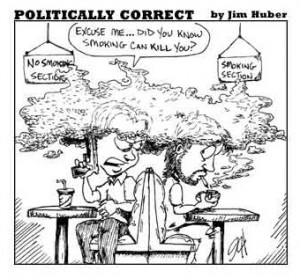The Benefits Of Exercise
 When we talk about exercise, we nearly always refer to physical exercise. Exercise is the physical exertion of the body – making the body do a physical activity which results in a healthy or healthier level of physical fitness and both physical and mental health. In other words, exercise aims to maintain or enhance our physical fitness and general health. People exercise for many different reasons. Some of them are included below:
When we talk about exercise, we nearly always refer to physical exercise. Exercise is the physical exertion of the body – making the body do a physical activity which results in a healthy or healthier level of physical fitness and both physical and mental health. In other words, exercise aims to maintain or enhance our physical fitness and general health. People exercise for many different reasons. Some of them are included below:
Strengthening muscles
Optimizing the cardiovascular system
Practicing specific athletic skills
Controlling bodyweight
For fun
To win
To socialize
To get away from it all
People don’t exercise for various reasons. A study found that stress levels and cultural considerations affect how much and for what reasons college students exercise.
There are three broad Intensities of exercise:
- Light exerciseThe exerciser is able to talk while exercising. Going for a walk is an example of light exercise.
- Moderate exerciseThe exerciser feels slightly out of breath during the session. Examples could be walking briskly, cycling moderately, or walking up a hill.
- Vigorous exerciseThe exerciser is panting during the activity. The exerciser feels his/her body is being pushed much nearer its limit, compared to the other two intensities. This could include running, cycling fast, and heavy weight training.
Exercise can be divided into three broad categories, aerobic, anaerobic, and agility training:
Aerobic exercise
Aerobic exercise has the aim of improving the body’s consumption of oxygen. The word aerobic means with oxygen. Aerobic refers to our body’s use of oxygen in its metabolic process (energy-generating process). Most aerobic exercises are done at moderate levels of intensity for longer periods, compared to other categories of exercise. An aerobic exercise session involves warming up, exercising for at least 20 minutes, and then cooling down. Aerobic exercise involves mainly the large muscle groups.
A physical therapist, Col Pauline Potts, and an exercise physiologist, Kenneth Cooper M.D., both in the US Air Force, were the first to use the term aerobic exercise during the 1960s. Dr. Cooper wanted to find out why some very strong people were poor at long-distance running, swimming and cycling. He researched people’s performance in terms of their ability to use oxygen with the use of a bicycle ergometer. In 1968 Dr. Cooper published his book Aerobics. The book included scientific programs using aerobic exercises, such as swimming, running, cycling and walking. The book became a bestseller. All present aerobic programs use Cooper’s data as a baseline.
Aerobic exercise is generally performed at a moderate level of intensity over a long period. Running for 20 minutes is an aerobic exercise, while sprinting 200 meters is not. Playing badminton for 30 minutes is an aerobic activity if the movements of the players are fairly continuous. Golf, on the other hand, is not seen as aerobic because the heart rate has not been raised at a sustained level for long enough.
Aerobic exercise is considered to have the following benefits:
- Strengthens the muscles that are involved in respiration – exercises that facilitate the flow of air in and out of the lungs.
- Strengthens and enlarges the heart muscle. This improves aerobic conditioning – pumping of blood and the heart rate (lowers the pulse of a person when he/she is resting).
- Tones muscles throughout most of the body.
- Reduces blood pressure.
- Improves circulation.
- Raises the number of red blood cells, which in turn facilitates transportation of oxygen.
- The sleep quality of insomnia patients can improve with moderate exercise, a study found.
- Improves mental health.
- A study found that exercise reduces migraine suffering.
- Reduces the risk of heart disease and cardiovascular problems.
- Helps improve survival rates of patients with cardiovascular diseases significantly, as this study found.
- Stimulates bone growth (high impact aerobic exercise), reduces risk of osteoporosis.
- Increases stamina or endurance. Aerobic activity increases the body’s ability to store energy molecules such as fats and carbohydrates within the muscle.
- Increases blood flow through muscles.
- Improves muscles’ ability to use fats during exercise, thus preserving the intramuscular glycogen.
What is Anaerobic exercise?
The aim of anaerobic exercise is to build power, strength and muscle. The muscles are exercised at high intensity for short durations. A short duration usually means no more than about two minutes.
Anaerobic means without air. Anaerobic exercises improve our muscle strength and our ability to move with quick bursts of speed. When thinking of anaerobic exercise, think of short and fast or short and intensive. Anaerobic exercises include:
- Weight lifting
- Sprinting
- Intensive and fast skipping (with a rope)
- Interval training
- Isometrics
- Any rapid burst of hard exercise
Oxygen is not used for energy during anaerobic exercise. During this type of exercise a by-product – lactic acid – is produced. Lactic acid contributes to muscle fatigue and must be used up during recovery before that muscle can be subjected to another anaerobic session. During the recovery period oxygen is used to give the muscle a “refill” – to replenish the muscle’s energy that was used up during the intensive exercise.
Overall, anaerobic exercise uses up fewer calories than aerobic exercise. The cardiovascular benefits of aerobic exercises are greater than the cardiovascular benefits of anaerobic exercises. However, anaerobic exercise is better at building strength and muscle mass, while still benefitting the heart and lungs. As you build more muscle you will burn more fat, even at rest. Muscles burn more calories per unit volume than any other tissue in the body. A muscly person burns more calories than a non-muscly person, even if while he/she is resting. This study found that resistance training may aid in weight loss.
How Does Anaerobic Exercise Work?
When a short, intensive burst of activity occurs there is a temporary shortage of oxygen being delivered to the working muscles at first. The production of anaerobic energy creates a by-product; lactic acid. As mentioned above, lactic acid causes muscle fatigue, which is the reason the session cannot last long. However, after regular training the person’s body becomes better equipped to handle lactic acid. After several practice sessions the body becomes better at getting rid of lactic acid – it also learns how to produce less of it. The body also produces buffers that postpone the onset of fatigue during an anaerobic session. Anaerobic exercises offer the following benefits:
- The exerciser gets stronger
- The exerciser experiences growth in muscle mass
- Strengthens bones
- Strengthens and protects the joints
- Helps control bodyweight
- The exerciser can withstand a greater buildup of lactic acid and other waste substances, and can eliminate them more rapidly
What is agility training?
Agility training aims to improve a person’s ability to speed up and slow down, change directions while maintaining balance and control. In tennis, for example, agility training helps the player maintain control over his/her court positioning through good recovery after each shot. A crucial skill in tennis is to be able to position yourself in the court so that you can hit the ball to maximum effect. Agility does not only help the tennis player get to the ball more effectively and set up for a better shot, it also gives him/her better balance in order to hit the ball.
Agility training is practiced extensively by people who practice certain sports where positioning, coordination, balance and the ability to suddenly change posture and speeds are essential.
Agility and coordination are two key attributes for a successful soccer (UK/Ireland: football) player. Such compound movements as dribbling, turning, passing and intercepting require a wide assortment of balance, coordination and other skills, such as the ability to accelerate and decelerate quickly. A good soccer player also needs excellent special awareness and accurate timing. Soccer players often practice improving their ability to change the direction of the body abruptly, or shift stance without losing balance.
Agility includes speed, strength, balance and coordination. The following sports are known to require agility (there are many more than on this list):
- Tennis
- Soccer
- Rugby
- American football
- Squash
- Hockey
- Badminton
- Volleyball
- Basket ball
- Martial arts
- Boxing
- Wrestling
Yoga and Pilates
Some exercises include a combination of stretching, muscle strengthening, balance, etc. A good example is Yoga.
Many experts say stretching is an exercise in itself. Yoga exercises, or movements, improve your balance, flexibility, posture and circulation. Yoga originated in India a long time ago, and is aimed at unifying the mind, body and spirit. Modern yoga – the type of yoga practiced by most people in western countries – uses a combination of meditation, posture, and breathing exercises. Yoga can be tailored to meet the needs of individuals, such as those with arthritis, asthma, or certain body pains. Pilates is similar to Yoga, but it focuses more on the core abdominal and back muscles.
Some facts about exercise and lack of exercise
Most of us know how beneficial exercise is for our health. It is surprising, however, how little many of us know about the dangers of being unfit. In Western Europe, North America, Japan, Australasia, and much of the rest of the world, the number of overweight/obese people is growing alarmingly fast.
- The UK has a population of 61 million. 24 million of them are overweight/obese today. Experts say it will not be long before 25% of the UK’s population is obese (not overweight, just obese). The USA has already reached that figure – in Tennessee and Alabama over 30% of adults are obese today.
- 9,000 premature deaths each year in the UK are because of obesity. Obesity significantly reduces the lifespan of a person.
- Physically active people have a much lower risk of developing heart disease, stroke, type 2 diabetes, and many types of cancer.
- 30% of heart disease deaths in the UK happen to people less than 75 years of age.
- Vigorous exercise can help elderly people avoid disability, a study found.
- Women who do not exercise regularly have more complications during and after pregnancy. This article explains why women should be encouraged to exercise during pregnancy.
- Exercise improves your mood.
- Physical activity after the menopause reduces breast cancer risk, a study revealed.
- Regular exercise improves your sex life.
- A study found that exercise makes you eat less by suppressing appetite hormones.
- Exercise improves your confidence.
- A study explains how exercise can reduce cigarette cravings for people who are trying to quit smoking.
- Exercise helps you live longer (mainly for the many reasons listed above).
- Even some cancer patients can benefit from exercise. A study explains how exercise can help non-small cell lung cancer patients.
Finding the time to exercise
Many people who do not exercise say they do not have the time. However, it is possible to increase the amount of time you are physically active, even if you are extremely busy. For example:
- See how many trips you take by car and decide which ones could be replaced by walking or cycling. This does not have to be a black or white measure. It could include parking your car half a mile from your destination and walking the rest of the way. Traffic experts throughout most of the world say that the majority of car trips are very short ones.
- If you are using public transport try getting off at an earlier stop and walking the rest of the way.
- A study found that interactive video games – such those played on the Nintendo Wii – may raise heart rate and provide exercise intensity levels high enough to meet federal physical activity guidelines.
- When you are in a building and want to go upstairs, try walking it, rather than taking the elevator or escalators. This does not have to be a black or white measure – you can do half and half.
- There are several gentle exercises you can do while watching TV. Especially when the adverts are on.
- If you do not have time to exercise but have time to watch TV, think about how much of that TV time could be replaced by some physical activity. Most people say they do not have time to exercise, but we are all watching more TV than ever before. Even short bursts of 30 second exercises are good for improving metabolism, a study found.
- Migraine – there are many safe exercises for migraine sufferers.
- If you do housework, see if you can do it a bit more vigorously and turn it into an exercise session.
Tips on adding exercise to your routine
Experts say that for a physically inactive person to become active, and remain active for the long-term, the activity needs to be convenient and enjoyable. The activity needs to be something you can easily fit into your routine for several days each week. Even if you end up adding just 30 minutes of physical activity to your day, that is fine. Some of the examples below are the easiest to fit into a daily routine:
- Go for a brisk 30-minute walk five times each week. Ideally, it should be done in one session. If you can’t, two 15-minute sessions would also be good.
- Walk you dog more often. If you do not have a dog but know a nearby friend who has one, offer to walk it for him/her.
- Find out whether there are any swimming pools nearby. Try to add some swimming to your weekly routine. This does not have to be every day.
- During your lunch break at work go for a walk.
- Join some exercise classes.
- Join a martial arts club. Beginner’s sessions can be gentle and fun.
- Beginners must remember that the secret is “little and often”. A little bit every day is great – one big session once a week is not. Make sure your progress is gradual. Make sure you drink plenty of water during and after you exercise. Check with your doctor if you are not sure about your health.
- Experts say an exercise program should include both aerobic and anaerobic activities. This is true. However, if you are currently inactive, anything is better than nothing.
Some advice when you start an exercise program
When people start an exercise program they may experience various emotions, from elation to anxiety about not being able to keep it up. Remember the following tips which may help you achieve long-term success:
- Remember why you startedPeople start exercising for many reasons: weight loss, health, vanity, the doctor told them to, and to recover from an illness. Keep remembering why you started as this will help keep you motivated.
- Do everything at your own paceHumans tend to be competitive animals. This is great for the winner, and those who come second or third. However, being competitive in the wrong way can kill motivation. If you have to compete, compete with your past self. Compare your performance today with your performance in two weeks’ time. Check your weight, heart rate, blood pressure – then take it again in about three weeks and see the difference.
- You have to like itFor long-term success the activity has to be something you enjoy. There are so many activities to choose from. Perhaps there is an activity you really enjoyed when you were a child.
- Join a club with a friendIf you join a fitness club with a friend, or exercise with a friend you may enjoy the sessions more. Some people prefer not to have the stress of someone else around. This depends on you.
- Experts can be very usefulA study found that exercise and behavioral intervention improves fitness and lowers systolic blood pressure.
- VariationEvery few weeks change your exercise program. This is important for your motivation and also for best results. The body improves faster if you change your program now and again. This does not mean you have to change walking/running to something else. It could mean changing your speed and distance, and pacing yourself in a different way, perhaps altering your route.
- Be realistic about your goalsSome people are motivated by goals, others find them stressful. If you need goals make sure they are realistic – and work towards them.
- The longer you keep it up the longer you will continue to do itAfter a few weeks your exercise routine starts to become a habit. Even if you find it a bit of a chore at first, remember that after a few weeks it will really become a habit.
Written by Christian Nordqvist











 Effects on the Lungs
Effects on the Lungs

 Definition of Substance Abuse
Definition of Substance Abuse
 Why Anger Management Skills are Important to your Health
Why Anger Management Skills are Important to your Health






 Aromatherapy uses aromatic essential oils medicinally to improve the health of the body, mind, and spirit. It enhances both physical and emotional health, we recommed
Aromatherapy uses aromatic essential oils medicinally to improve the health of the body, mind, and spirit. It enhances both physical and emotional health, we recommed 
 he 19th century and focused on using chemical drugs. However, the French and German doctors still recognized the role of natural botanicals in treating illness.
he 19th century and focused on using chemical drugs. However, the French and German doctors still recognized the role of natural botanicals in treating illness.



.jpg)



 Smoking Kills
Smoking Kills


 As soon as we hear or read the word exercise, the first thing that comes to our mind is crunches, weight lifting, push-ups, pull-ups and other such workouts that make us drip. But, this not what exercise is all about. Such workout or weight training does help us in building our physique, but not everyone has enough time or mental strength to persevere for weight training, especially in this fast paced life.
As soon as we hear or read the word exercise, the first thing that comes to our mind is crunches, weight lifting, push-ups, pull-ups and other such workouts that make us drip. But, this not what exercise is all about. Such workout or weight training does help us in building our physique, but not everyone has enough time or mental strength to persevere for weight training, especially in this fast paced life.

 There seems to be a new movement growing n the USA; people, especially in big cities, are downsizing and starting to live in very small apartments and houses. Primarily, it is an economical decision because rent rates tend to be very high in large cities such as New York, Boston, San Francisco, and Los Angeles and smaller dwellings look like a good option for budget-conscious renters. Moreover, it seems to work the best for single people who spend most of their time at work and socialize outside. Many of the buildings with micro-apartments offer communal amenities such as gyms, media rooms, and outside recreational areas which provide the tenants with an opportunity to meet their neighbors and socialize.
There seems to be a new movement growing n the USA; people, especially in big cities, are downsizing and starting to live in very small apartments and houses. Primarily, it is an economical decision because rent rates tend to be very high in large cities such as New York, Boston, San Francisco, and Los Angeles and smaller dwellings look like a good option for budget-conscious renters. Moreover, it seems to work the best for single people who spend most of their time at work and socialize outside. Many of the buildings with micro-apartments offer communal amenities such as gyms, media rooms, and outside recreational areas which provide the tenants with an opportunity to meet their neighbors and socialize.